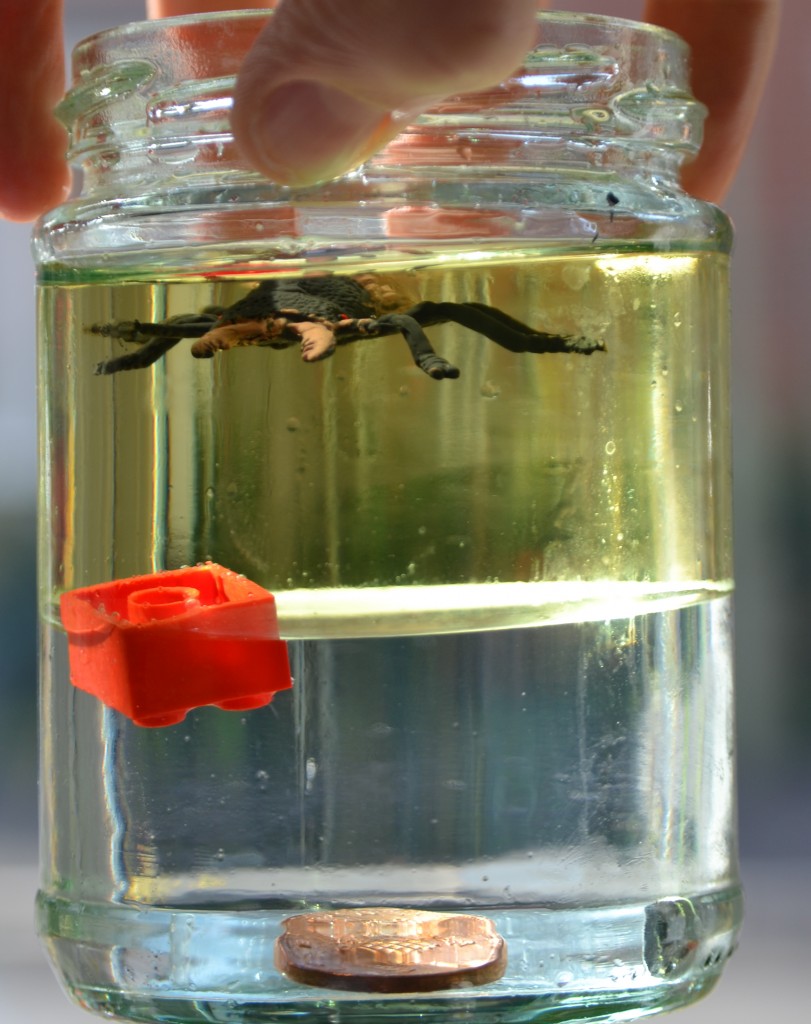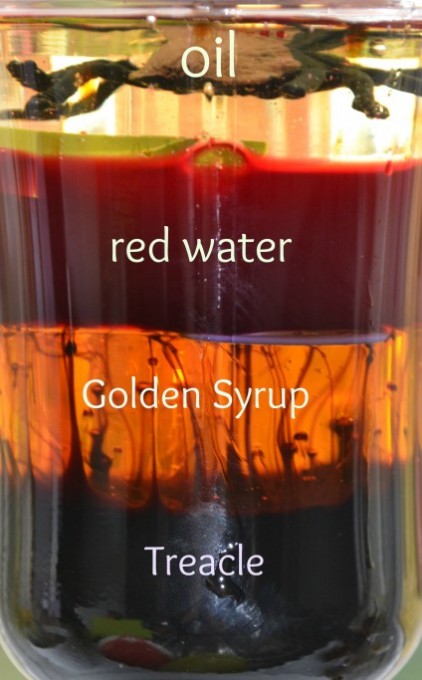We’re very excited to be sharing a fun demonstration of density on Teach Starter today. Even if your children are too young to really understand the concept, they’ll still love watching different layers form when you add liquids of different densities to a glass and how different objects float on the different layers. The liquids with the greatest density sink to the bottom.
You can add as many layers as you want, and experiment to see how they sit on top of each other.
What you need
- Vegetable oil
- Water
- LEGO or other small objects.
- Other liquids to try are golden syrup, treacle, milk, honey, coloured water.
Instructions
Pour some water carefully into a glass or jar.
Very carefully add about the same volume of cooking oil on top.
Then drop a couple of small objects into the mixture and observe what happens. Can you find something to float on each layer?
What happens if you shake it?

What do you think of our spooky Halloween density glass?

The science bit
Each of the liquids have a different mass of molecules or different numbers of parts squashed into the same volume of liquid, this makes them have different densities and therefore one can sit on top of the other – the more dense a liquid is the heavier it is.
Objects and liquids float on liquids of a higher density and sink through liquids of lower density. The LEGO brick sinks through the oil but floats on the water, while the coin sinks through both. The coin is therefore more dense than both the oil and the water. The plastic bug floating on the oil is less dense than both.
Density is how much mass is in a volume (or space).
Related Posts
Did you try the magnetism activity we shared last month?
Do check out Science Sparks on Facebook too.
After reading this blog, you might be interested in:
[resource:4580][resource:11807]







Comments